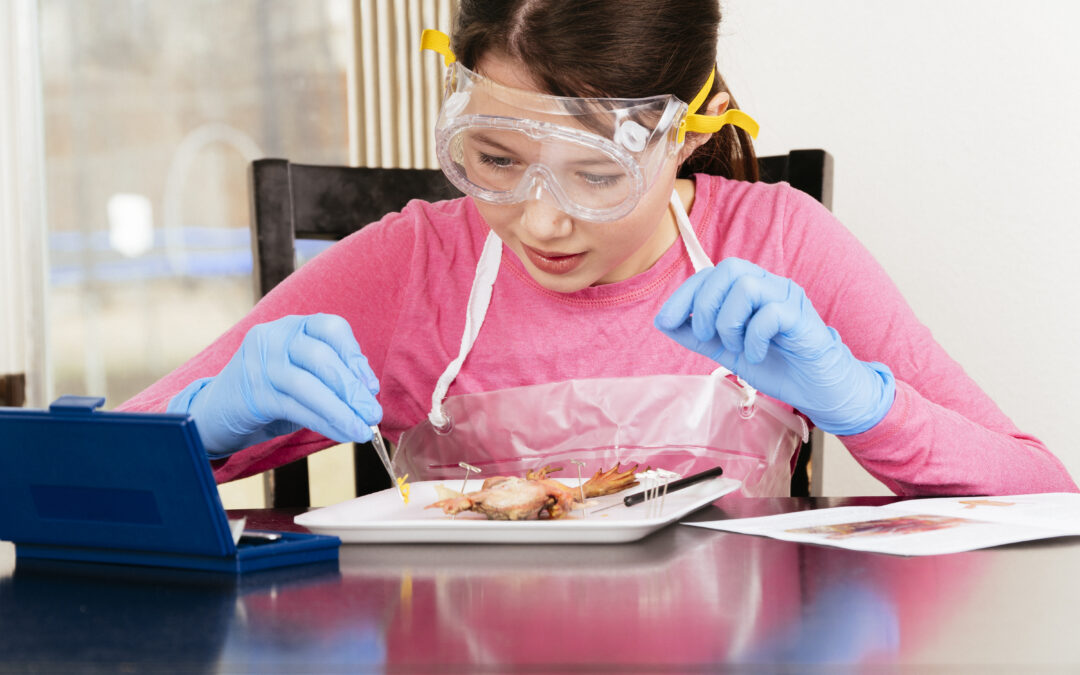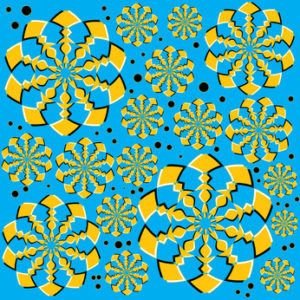
What do you see when you look at the picture to the left? Do the wheels appear to spin? It’s just a picture, so how can that be? Science explains all sorts of cool phenomena and events, like the optical illusion of the spinning wheels.
Many mysterious or even “magical” occurrences are easily explained by scientific principles. Perform the following science “magic” tricks to amaze your friends and family with your abilities. Then amaze them even more as you explain the science behind them. It’s not wizardry, witchcraft, or even a magic trick—it’s science!

Science Magic Tricks: Scattered Pepper
What You Need:
- Shallow dish
- Water
- Pepper
- Dish soap
What You Do:
1. Pour some water into the dish.
2. Sprinkle about a teaspoon of pepper over the surface of the water. Notice how it floats but doesn’t move much? Stick your finger into the water and try to push some of the pepper towards the edges of the dish.
3. Now put a drop of dish soap onto your finger and dip it in the water in the center of the dish. What happens to the pepper this time?
What Happened:
Water in a dish has a tension across it called surface tension—it acts sort of like a very thin layer of film stretched across the water. This tension isn’t broken by the pepper or by your finger. It is, however, broken by dish soap! The dish soap breaks through the “film” across the top of the water and creates a burst, pushing the pepper outward towards the edges of the dish! To perform this as a magic trick for your family or friends, you’ll need to start over by rinsing all the soap out of the dish and refilling it with water and pepper. Once the surface tension has been broken by the soap, you can’t get it back unless you start over.
Click here for a printable version of the Scattered Pepper Science Magic Trick.
Science Magic Tricks: Spinning Straw
What You Need:
- Plastic bottle and cap
- Plastic straw
- Wool or fleece sweater or blanket
What You Do:
1. Make sure the cap is screwed onto the bottle. Set the bottle on a table.
2. Wrap the bottom edge of a sweater or blanket around the straw. Holding onto one end, rub the straw back and forth between the fabric several times.
3. Still holding the same end of the straw, carefully balance it across the cap of the bottle. Touch the straw as little as possible.
4. Place one finger very close to one end of the straw (try not to actually touch the straw) and begin to move your finger slowly in a circle around the bottle. The straw should follow it! This step may take a little practice to make it move smoothly.
What Happened:
Rubbing the straw between the layers of cloth of your shirt created static electricity. The rubbing motion caused the straw to gain an electrical charge. When your finger came close enough, the negative charge on the straw was attracted to the positive charge of your skin. As you moved your finger, the straw moved right along with it because the charges were attracted to each other. Do you remember learning about magnets? Opposite charges attract while like charges repel (push away) and the same is true for electrical charges. Try showing your friends or family members this science “magic” trick. Can they figure out how you made the straw move without touching it?
Click here for a printable version of the Spinning Straw Science Magic Trick.
Science Magic Tricks: Smiling Presidents
What You Do:
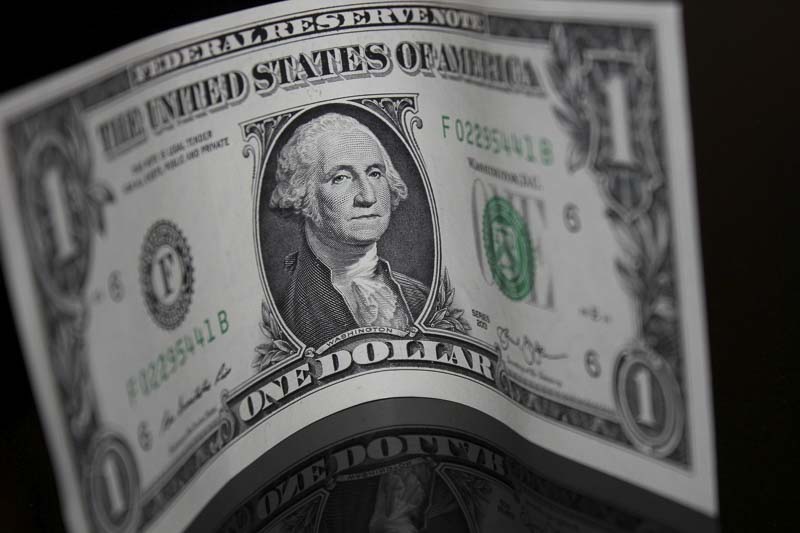
1. Take a dollar bill (any bill with a face on it will work; we used a $1 bill) and make a vertical crease through the middle of one eye and another crease down the center of the other eye.
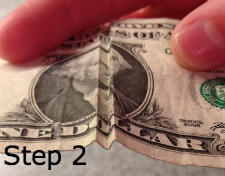
2. Make a third crease between the eyes and directly between the first two folds. When you look at the bill from one of the long edges, the folds should form an “M” shape.
3. Look at the face from the front of the bill—it probably looks a little unusual because of the folds.
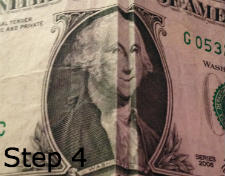
4. Tilt the bill down slightly and notice how the president pictured on the bill looks as though he is smiling.
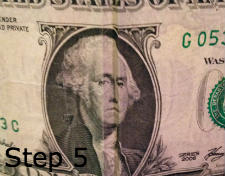
5. Now tilt the top of the folded bill towards you slightly and notice how the look on the president’s face changes?
What Happened:
The folds you made created an optical illusion on the the face. The actual picture of the face didn’t change! But because of the folds you added, the way your brain processes the face is different. Optical illusions can be tricky! Particular combinations of colors, shapes, and sizes can play tricks on your brain and make you think you see something that isn’t really there or cause something to appear differently than it actually is.
Follow the links below to see more optical illusions.
- Try this experiment to learn more about surface tension.
- Want more science experiments? Try out these cool chemistry reactions.






